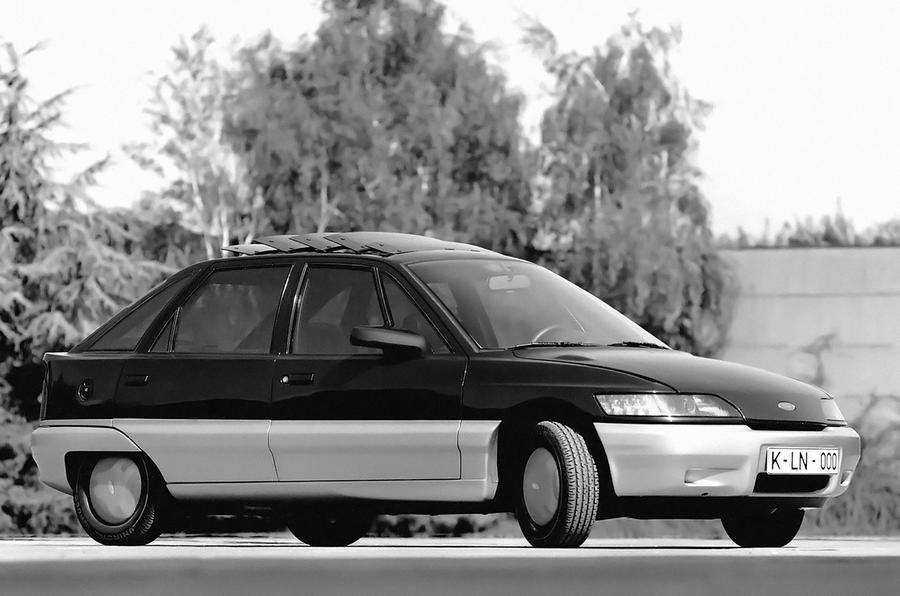During the 1980s Ford made a big effort to throw off its reputation for producing solid and reliable but hardly innovative cars and increase its focus on design and technology.
Out of that strategy came the Eltec, or ‘Electronic Technology’, an advanced prototype car that pointed to the way in which the company’s top designers and engineers perceived the car of the 1990s.The Eltec was a collaboration between Ford’s R&D departments in Dunton and Cologne, plus the Ghia Design Studio in Turin. It was made to “prove that even small family cars can benefit from electronic co-ordination of all their functions and that electronics can improve a car’s dynamics while reducing fuel economy and exhaust emissions”.
Built in less than 18 months for a Frankfurt show debut, the Eltec was bristling with ideas, as Autocar’s then technical editor Graham Jones described when he examined the car.“The body is a small, four-door hatchback configuration featuring a large glasshouse, a slippery shape and specially designed headlamps,” he wrote. “A glass sunroof comprised five louvres that could be either opened for ventilation or electrically retracted.
“The suspension is of the active ride variety, with its own electronic brain to control spring rates and ride height. The central black box also controls electronic anti-lock brake and anti-wheelspin systems, while the dedicated wheel/tyre combination is of the run-flat type.”The engine and its control system were the stand-out features, presaging today’s trend for frugal downsized units.
“The 1.3-litre unit is brand new and develops 80bhp at 5000rpm and 88lb ft between 2500 and 4000rpm,” wrote Jones. “Designed and built as part of Ford’s lean-burn engine technology programme, the aims were to produce a power unit with compact dimensions, low internal friction and the ability to pull well from low engine speeds at the same time as producing good performance through the speed range.
“The engine is mated to Ford’s CTX continuously variable transmission, using the familiar belt and pulley drive arrangement. Next to the gear lever is a smaller lever which allows the Eltec driver to select either ‘Power’ or ‘Economy’ modes. In the latter, the transmission ratio is controlled so that engine speed is at its most efficient.
“What makes these developments significant is that they are integrated using a modified version of the EEC-IV computer fitted to the 2.0 EFi Granada and Sierra. Unlike conventional cars with onboard computers, which control the engine and transmission as separate entities, in the Eltec the computer regards them as one system.





Join the debate
Add your comment
I recall very well all the
Rover beat it in group tests
Also on the 1990 Escort crime
Ha! Shame the 1990 Escort was
Some bad, some good
On launch, it was universally criticised by the press for roly-poly handling, understeer and poor engines. My 1998 version was sort of okay, even if the 1.6 was so weedy that putting the A/c on seemed to sap half its power. On the bright side, the hatchback Granada brought anti-lock brakes as standard to the masses, and was unique with its Triplex heated windscreen.